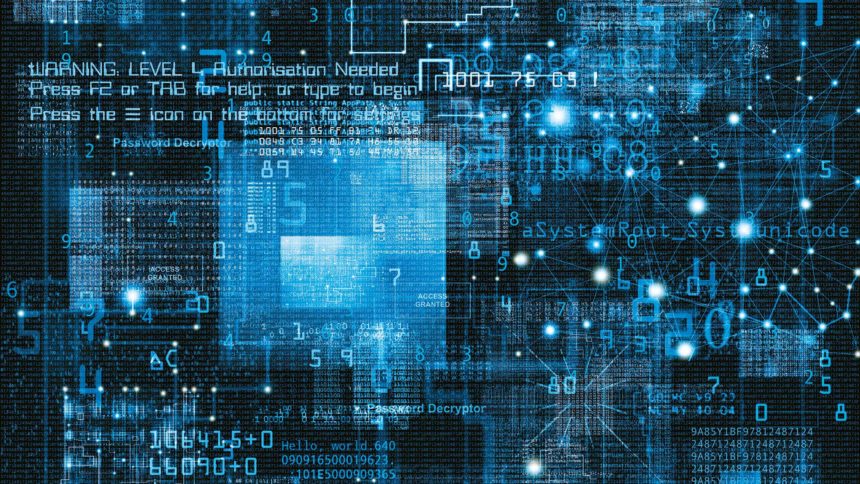Information technology experts routinely remind how data is king, but in the healthcare environment — where so much information exists, often across a wide range of solutions — the ability to harness data effectively becomes the all-powerful emperor
That message is resonating more than ever in the senior living segment. Today, the most successful operators are leveraging IT solutions and the data captured to improve resident care and operational efficiencies and help communities gain an advantage in the increasingly competitive marketplace.
The adoption of IT applications has increased markedly in use and importance in senior living, says Jerry Wilmink, chief business officer for CarePredict. “Many senior living operators have installed high-speed wireless networks, cloud services and connected internet of things wearables and devices and have moved from paper to pixels with cloud-based electronic health records. The digitization of resident health data allows for the delivery of faster, more efficient and better care and outcomes.”
IT TRENDS
Web-based applications, including electronic health records and business solutions, and mobile devices used by caregivers to provide point-of-care documentation, are seeing some of the most widespread adoption in the senior living segment today.
“More senior living organizations are realizing they need to abandon paper documentation of care plans [and replace that with] electronic point-of-care, eMAR and nutrition management tools,” says Patrick Hart, vice president of senior living solutions for MatrixCare.
Capturing and analyzing timely data helps operators deliver more efficient care and ensure better outcomes, especially when interoperability and additional technology are effectively layered onto the EHR. As Simply Connect CEO Craig Patnode says, any successful operator will require the full EHR to be fully deployed. Some facilities are only using fragments of the EHR or none at all, he adds.
“The very first step is to fully implement EHR, including eMAR, and risk management modules for tracking resident equity. Most operators will need to invest additional capital in meeting these needs.” Simply Connect is launching a fully integrated Care Management app with a health information exchange to garner metrics, outcomes and focused care management. Greater efficiencies on the floor will be realized by connecting everyone at the community within a primary care team that includes the physician, nurse, pharmacy and family, Patnode adds.
Efficiencies of mobile charting can increase caregiver satisfaction by allowing them to focus more attention on hands-on resident care. User-friendly mobile devices also allow for quicker access to more accurate and valuable clinical data, including resident minimum data set interviews and eMAR, says Mark McIntyre, executive vice president and general manager of CareWorx.
Pegasus Senior Living has seen firsthand the benefits of handheld devices and more user-friendly documentation and reporting. As Pegasus president, Chris Hollister says, mobile technology that allows resident care team members to record the actual provision of care in real time helps solve one of the biggest challenges in assisted living: how to get paid for what you do. “When caregivers have to remember 10 to 15 care episodes and record it after the hallway is complete or even after the entire shift, nuances and details are lost. Handheld devices make their lives easier and more rewarding, and I know this for a fact by interviewing team members who have recently converted from pen-and-paper systems to hand-held devices.”
Effective IT application also can provide operators with information that can help them market their facility more effectively to prospective residents and their family members, and employees.
“Many consumers are very tech-savvy and data-driven and they are looking for points of differentiation or metrics that earlier generations of consumers may not have asked about,” Hart says. Twenty years ago, he says, the focus may have been on the aesthetics of the residence, whereas today, consumers may ask for data on resident falls or how the facility will ensure compliance with their loved one’s specific dietary needs.
To further improve marketing efforts, many senior living operators are adopting dedicated customer relationship marketing applications that allow them to market in the business-to-business space (such as to other referring providers) as well as to seniors and their family members. A robust CRM solution designed for the unique needs of senior living organizations can help operators track referral leads and customer information while also integrating with commonly used marketing automation tools, such as Mailchimp, Marketo or Pardot, Hart says.
“Senior living providers are realizing the significant gains that come from having key information about potential or current residents in one location — and easily accessible by a number of staff members day or night,” he says. “This is especially important during transitions of care and facilitates a smooth handoff during shift changes or when substitute caregivers are needed.”
DIGGING DEEPER
The ongoing integration of new connected and smart technologies is gaining momentum as practical applications are realized. “Communication, monitoring, therapy, medical diagnosis, physical safety and more are being enhanced by hardware and software solutions,” says Jim Stormoen, chief clinical informatics officer for VCPI. The firm offers a range of IT services, including strategic IT consulting, network design and management, and data security.
Well-implemented time and attendance modules and staffing solutions can offer great return on investment as well, industry experts say. As the healthcare segment continues to face a caregiver shortage, software that streamlines the process of hiring and managing caregivers is especially in demand, Hart adds.
Scheduling software that gives staff members at-a-glance details of their schedules, the ability to trade shifts and more can lead to improved employee satisfaction. Although the return on investment may be less obvious, outcomes that lead to lower turnover are generally worth the cost in the long run,” Hollister says. Pre-screening software solutions for employee interviewing also help operators develop a short list of viable candidates more quickly, he says. Pegasus Senior Living uses MatrixCare for an integrated IT solution that covers everything from CRM to billing to payables. Another example of a real and measurable return on investment, Hollister says, is the adoption of automated time clocks.
“When we first implemented these at another company in the mid-2000s, we got an immediate and measurable return on investment in real dollars. A lot of people cheat a little by clocking in five minutes early, so automated time clocks are an easy ROI to measure.”
Artificial intelligence and predictive analytics applications also are being tapped with growing frequency in the senior living segment, allowing providers to track, assess and monitor subtle changes in a resident’s daily activities and behavior patterns. Proprietary connected remote-sensing technologies, wearables and deep learning platforms create a reactive and proactive solution that empowers staff to rapidly provide care and predict health conditions such as urinary tract infections, depression and increased fall risk days ahead of visible symptoms or clinical diagnosis, Wilmink says. Facilities that deployed the CarePredict solutions saw up to 25% fewer falls and up to 61% faster staff response time, she said.
AI solutions also are helping deliver a new way to engage, educate and entertain residents, according to Stormoen. “In the near future, we’ll see increasingly widespread application of artificial intelligence [that will] play a critical role in providing improved caregiving and expanded lifestyle options for residents.”
LAYING THE FOUNDATION
For all IT’s potential benefits, senior living operators will see their investments fall short if they don’t allocate adequate time, attention and resources to their infrastructure and planning phases.
Operators need a good basic IT backbone to make everything work, and IT planning, strategy and a solid Wi-Fi network are key, McIntyre says. “Basic infrastructure still is a problem for many facilities. Many of today’s innovative technology solutions for senior care and resident services depend on having really solid, enterprise-quality Wi-Fi networks, so facilities need to get back to basics and ensure their Wi-Fi setup is adequate and can handle new demands placed on it.”
Many operators also are missing a dedicated applications specialist who can drive the applications — not just an IT director but a full-time applications specialist as a project manager who can drive the compliance, deal with staff turnover, and more, Patnode says. “It’s a challenge, but unless this happens, operators will become beholden to staff turnover, and this will not meet the results for outcomes. Any operators not charting outcomes will see a drastic change in referral management.”
What’s more, only IT solutions that are user-friendly and will work well for the senior living provider’s team and residents should be considered for adoption, Hollister adds. He urges IT vendors that are new to the space to find operators that will let the vendor shadow caregivers and other workers to better understand how life works in a community. “Too many solutions are too complex and take too much time to manage, so they just don’t work for the sector,” he says.
Facilities looking to expand their IT adoption but daunted by all the options and requirements will benefit from technology planning and strategy assistance. This will help them identify needs and goals and more effectively pinpoint which solutions — and infrastructure improvements — will garner the greatest return on investment.
“We often recommend starting with a technology assessment to get a baseline of where you are today to help guide decisions and set up a long-term plan for proper IT implementation,” McIntyre says.



